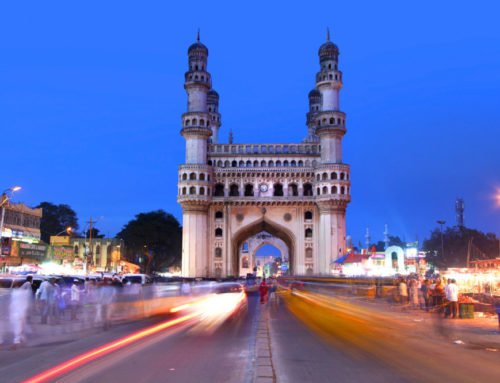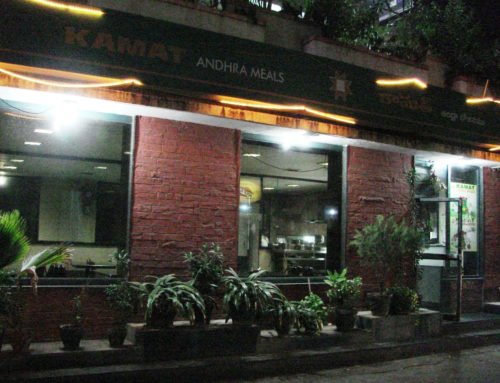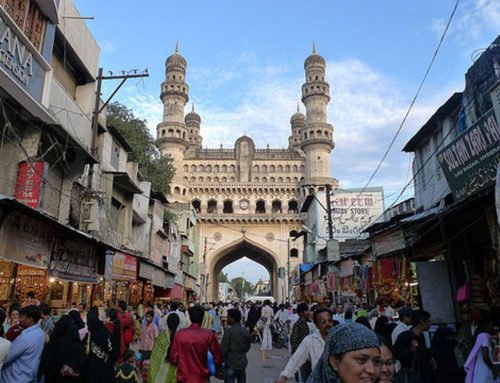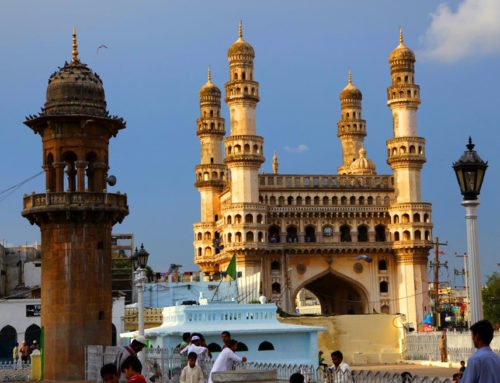Overview
- Features: One of three national museums of India
- Opening Times: 10am to 5pm (Sat-Thu)
- Best Time to Visit: All year round
- Duration: 2 to 3 hours
- Travelled By: Bus
- Cost: Indian/foreigner Rs 10/150
- Address: Salar Jung Marg, Hyderabad, Andhra Pradesh, India
- Type: Museum
Author Reviews[display_rating_item_results rating_form_id=”2″ rating_entry_ids=”1″ show_category_filter=”false” show_options=”true” result_type=”star_rating” preserve_max_rating=”true” show_title=”false” show_count=”false” ]
Total Rating: [display_rating_result rating_form_id=”2″ show_count=”false” show_rich_snippets=true] [accordions load=”1″] [accordion title=”User Reviews” last] [display_rating_item_results rating_form_id=”5″ show_options=”true” result_type=”star_rating” preserve_max_rating=”true” show_title=”false” show_count=”true” show_rich_snippets=true] [/accordion] [accordion title=”Add Review”][display_rating_form show_email_input=”true” show_comment_textarea=”true” show_name_input=”true” rating_form_id=”5″] [/accordion] [/accordions]
Summary
The Salar Jung museum in Hyderabad is one of the top museums in India and is definitely worth a visit on a trip to the South Indian city. If you’re looking for the best information on Salar Jung museum, then you’ve come to the right place. Read on for everything you need to know about this impressive museum.
Salar Jung Museum Hyderabad
The Salar Jung museum in Hyderabad is one of the top museums in India and is definitely worth a visit on a trip to the South Indian city. If you’re looking for the best information on Salar Jung museum, then you’ve come to the right place. Read on for everything you need to know about this impressive museum.
Salar Jung museum is the third largest museum in India housing the biggest one-man collections of antiques in the world. Belonging to the Salar Jung family who served as Prime Ministers of Hyderabad, it is well known throughout India for its huge and varied prized collections belonging to different civilizations dating back to the 1st century.
History of Salar Jung Museum
Nawab Mir Yusuf Ali Khan Salar Jung III (1889–1949), former wazir (Prime Minister) of the seventh Nizam of Hyderabad Osman Ali Khan (r 1910–49), spent a substantial amount of his income over thirty five years to make this priceless collection, his life’s passion. The collections left behind in his ancestral palace, ‘Diwan Deodi’ were formerly exhibited there as a private museum which was inaugurated by Jawaharlal Nehru in 1951. Old timers believe that the present collection constitutes only half of the original art wealth collected by Salar Jung III. His employees siphoned off part of it, since Salar Jung was a bachelor and depended upon his staff to keep a vigil. Some more art pieces were lost or stolen during the shifting of the museum from Dewan Devdi to the present site. Later in 1968, the museum shifted to its present location at Afzalgunj and is administered by a Board of Trustees with the Governor of Andhra Pradesh as ex officio chairperson under the Salar Jung Museum Act of 1961.
Information About Salar Jung Museum
Located at Darushifa, on the southern bank of the Musi river in the city of Hyderabad, the Salar Jung Museum is one of the three National Museums of India. It has a collection of sculptures, paintings, carvings, textiles, manuscripts, ceramics, metallic artefacts, carpets, clocks, and furniture from Japan, China, Burma, Nepal, India, Persia, Egypt, Europe, and North America. Salar Jung’s highly individual taste ranged from objects of sublime beauty to some bordering on kitsch, which is what makes this museum so fascinating.
[singlepic id=1755 w=720 h=560 float=center]
The museum building is in a semicircular shape with 38 galleries, spread over two floors. The museum displays only a part of the original collections. The ground floor has 20 galleries and the first floor has 18 galleries. The exhibits on different subjects are displayed in separate galleries. Each gallery is huge and has many artefacts on display including ones dating back to the 1st century.
The impressive Nizams’ jewellery collection is sometimes on display.
Apart from the galleries, there is a reference Library, reading room, publication and education section, chemical conservation lab, sales counter, cafeteria etc. Guides are available at fixed timings free of charge.
Salar Jung Museum Map
[singlepic id=5227 w=720 h=560 float=center]
Salar Jung Museum Collections
The Founder’s Gallery
[singlepic id=1775 w=720 h=560 float=center]
This gallery is dedicated to the founder, Nawab Mir Yusuf Ali Khan Salar Jung III and his family, Salar Jung I and II who served as Prime Ministers of Hyderabad. Their portraits are put up in the closet near the entrance to the museum. The gallery has been organised to pay a fitting tribute to the family of the Salar Jungs through paintings, photographs and articles used by the members of the family.
[singlepic id=1765 w=720 h=560 float=center]
The gallery showcases porcelain objects of this period including a dark blue porcelain vase prepared in the presence of Salar Jung I on one of his visits to the Minton porcelain factory in England in 1876. There is also a rare commemorative vase which was amongst the fifty exclusive pieces produced on the eve of the Diamond Jubilee of Queen Victoria by the Coalport factory in 1897 in England. There are also a number of porcelains inscribed in the Persian script made to order from China by the nobility of the period.
[singlepic id=1773 w=720 h=560 float=center]
There is a masnad (throne of cushions used by native princes) of Salar Jung I along with the art objects of his time. The masnad consists of a rich embroderied cloth in gold and silver threads covering the floor with a bolster above it and two hand cushions on either side also with silver canopy poles in the four corners supporting the canopy. The Venetian glass candlebras on either side add a regal look to this formal seating.
Bronze and Painted Textile Gallery
[singlepic id=1777 w=720 h=560 float=center]
The bronze collection of the Salar Jung Museum gives a fairly good idea of the intimate association of this medium of expression with religion in the bygone days. In addition to bronze, the temples also made use of painted textiles for communicating religious mythology to the devotees.
The earliest bronze of this collection is an image of standing Vishnu which can be assigned to the late Pallava period of the late 9th century A.D. Several other Vaishnavite images displayed in this gallery belong to the period of Cholas who ruled from 846 to 1216 A.D. and the Kakatiyas and the Kalyani Chalukyas who were powerful in the 12th century A.D.
[singlepic id=1771 w=720 h=560 float=center]
Kalamkari is the art form of fabric design through the medium of dye rather than loom. It is due to the usage of Kalam (pen) that the term Kalamkari became widely known as a trade term at a later date. Masulipatam, Palakollu and Kalahasti in Andhra Pradesh and some other centres further south produced Kalamkari cloths that are unsurpassed in their beauty of design and richness of colour.
The Kalamkari presented in this gallery represent mainly the episodes from religious epics like Ramayana and Mahabharata.
Wood Carvings in South India
[singlepic id=1772 w=720 h=560 float=center]
Since time immemorial, wood has been the chief medium of building, construction and decoration in South India. The existing wooden remains in the Buddhist shrines of south-western India such as Bhaja and Karle proves that wood was universally employed for erecting the Buddhist and Hindu shrines prior to the advent of the Christian era. The carved stone panels from Amaravati in Andhra Pradesh also depict numerous examples of residential structures laid with thatched wooden roofs.
Apart from the magnificent edifices, the wooden figures of Hindu gods and goddesses were meticulously carved to decorate temple around South India. Every Vaishnavite temple in South India used to own a beautifully carved wooden Ratha to move the Utsava-Vigrahas. Thus, wood carving is one of the most ancient and traditional art forms of South India.
During the late medieval period, wood was employed for manufacturing household furniture to meet the swelling needs of the aristocracy. The art of wood making was also practiced to manufacture intricately carved doors, lintels, ceilings of residential houses along with household furniture. The beautiful cabinets, screens, chairs, tables made of rosewood and the majestic figures of divinity carved in sandalwood shows the perfect chiselling and exquisite workmanship of the carpenter’s art. The noted centres of wood carving in South India were Mysore, Coorg and Chennai (Madras). The beautifully carved high-backed chairs of Malabar are widely known for their skilled chiselling, intricate designs and art motifs.
Ivory Gallery
[singlepic id=1768 w=720 h=560 float=center]
Ivory carvings have been popular all over the world on account of its beauty and durability. Archaeological and epigraphical evidence reveal that ivory enjoyed tremendous popularity in India as a means for fine carving. The Salar Jung Museum has a sizeable collection of ivory objects not only from India but also from other parts of the world.
Noteworthy among the Indian ivory pieces is a mat dated to the 19th century woven out of ivory from Ramnagar near Benaras. The concept of taking fibres from an ivory tusk and making them pliable to weave into a mat is an astonishing feat of the ivory carvers. Another interesting piece is the loaded camel accompanied by its driver on foot holding it with a noose made entirely out of ivory in small unbroken links. The object is dated to early 20th century and testifies to the great skill of ivory carvers of Delhi who were also famous for painting on ivory. The chessmen and chausar sets of ivory, coloured and tinted from Gujarat are other fine examples. The remarkable specimen of lapidary on ivory can be seen from a set of chairs of Tipu Sultan which were acquired by Salar Jung III.
[singlepic id=1766 w=720 h=560 float=center]
[singlepic id=1757 w=720 h=560 float=center]
The museum also has a fine collection of ivory carvings from Far East and Egypt as well. The tradition of ivory carving has hoary antiquity in China (11th century B.C.) and considered precious next to jade. In Japan however the earliest ivory carvings are dated to 8th century A.D. Two heads of Bodhsattvas belonging to the 15th century A.D. from the Ming dynasty are noteworthy. The delightful ornamental figurines, as well as Netsukes (buttons or toggles) are fine examples of national art of Japan. The Burmese ivory carvings are represented by two delicately carved whole tusks with Buddhas and devotees, elegant figures of dancers, a sail boat, a lady and a gentleman are delightful examples on display here.
[singlepic id=1767 w=720 h=560 float=center]
[singlepic id=1764 w=720 h=560 float=center]
The collection also represents a few good examples of European ivory especially from Italy which resembles the marble sculpture in Neoclassical style. Ivory figures from Germany represent genre scenes of the 19th century. Noteworthy are the figures of Christian saints, and Madonna and Child from Goa which speak of the religious devotion and showcase the amalgamation of Indo-European styles.
Jade Room
[singlepic id=1769 w=720 h=560 float=center]
[singlepic id=1770 w=720 h=560 float=center]
The pride of the museum is the outstanding Mughal Jade collection, which includes an exquisite, translucent leaf-shaped cup. In India jade carvings developed during the Mughal rule. Attractive objects in white, sea-green, pale green and mostly in Nephrite jade were produced. Book stands, wine cups, mirror backs, sword and dagger handles dominate the Jade collection.
A specialty of the Mughal Jades is the pierced decoration and inlay with precious stones like rubies and emeralds. Displaying this dazzling decorations are few daggers reputed to be belonging to royal personalities like Jehangir and Noor Jehan.
[singlepic id=1761 w=720 h=560 float=center]
Manuscripts Gallery
[singlepic id=1756 w=720 h=560 float=center]
The Museum has a famous Quran Collection from around the World in different fonts and designs including an Arabic Quran and a Quran written in gold and silver. There are many more collections of religious books. A prized 13th-century Quran has the signatures of three Mughal emperors.
European Art Gallery
Salar Jung’s rather florid taste in European art is represented by some 19th-century statuary, while the collection of oil paintings includes a Canaletto, a Guardi and a Landseer.
Salar Jung Museum Marble Statue (Star Attraction)
[singlepic id=1776 w=720 h=560 float=center]
Among the sculptures the stand out is the world famous statue of the Veiled Rebecca by G.B. Benzoni, an Italian sculptor, in 1876. Her beautiful face hazily is visible through a marble-gossamer veil.
One of the most charming and delightful marble sculptures in the collection of Salar Jung Museum is the life size statue of ‘Veiled Rebecca’. Some people with a poetic bent of mind have said that “it is a melody in marble” and other have wondered if there is another sculpture in which the essence of feminine beauty has been realised with such fervour and consummate skill. This classical standing image chiselled by an Italian genius master, G. B. Benzoni in the second half of the 19th century.
Rebekah or Rebecca, the daughter of Bethual, is a Biblical character from the Old Testament. She was known for her beauty and lived with her brother. Anxious to arrange the marital life of Rebecca, her brother succeeding in selecting a good match for her. Isaac, son of Sarah and Abraham, the groom selected for Rebecca, was a handsome man and belonged to her own Jewish clan. Isaac was invited to her house to see her for selection and marriage. After his arrival, Rebecca was introduced to Isaac and betrothed. The shyness so natural to a woman overpowered her and she tried to hide her excitement by drawing the veil over her face. This modest act also in a way expressed her willingness to marry Isaac. He married her and later they were blessed with a son.
It is this incident that Benzoni, the creator of this marvellous masterpiece, has tried and successfully carved in marble. The graceful pose of Rebecca itself is enough to prove the aesthetic sensibility of the sculptor. What is most striking is the image of Rebecca in her form, which is slender, and her pose coupled with a quality of contentment and quietness. The acme of achievement in this piece is the thin, transparent veil covering her face, through which one can see the details of her expression. It is all in marble, and yet one hardly ever feels that the veil is of stone.
[singlepic id=1781 w=720 h=560 float=center]
Equally captivating is a double-figure wood sculpture built in the 19th century A.D. in France. It stands before a mirror and shows the facade of a nonchalant Mephistopheles and the image of a demure Margaretta in the mirror.
The eastern section is of equal importance with its wide variety of silk weaving and different art forms, including layer wood cutting paintings, porcelain works and many more, dating back to the 2nd century.
Walking Stick Gallery
[singlepic id=1779 w=720 h=560 float=center]
In this gallery a variety of walking sticks are on display. They are made out of cane, Malacca cane, wood, Sandalwood, ivory, fish bone, jade, glass, leather and some hilts were even decorated with semi-precious stones.
Most of the head mounts of the walking sticks in this gallery are of human beings and animals. Some have a mechanism with a button at the back from where normally they are operated. Most noteworthy among them are walking stick No. 6 that has a human skull on the top which opens its jaw upon pressing the button at the back, and No. 8 which has a head of a monkey that opens its mouth and shows its tongue. Also, walking stick No. 1 has a human head that is decorated with a magnifying glass.
[singlepic id=1778 w=720 h=560 float=center]
European Porcelain
The European porcelain shown in this gallery reflects the efforts that went into developing porcelain as a great medium of art. Part of the collection consists of Austrian porcelain, Dresden porcelain from Germany, English porcelain, Wedgewood porcelain, Sevres porcelain and Italian porcelain.
[singlepic id=1780 w=720 h=560 float=center]
Old Wedgewood is considered to be the finest pottery that England has ever produced in terms of workmanship, design, material and colour. No earthenware, native of foreign, combined so many technical perfections. The basalt and jasper ware are the best known and most sough after. With the exception of a white biscuit with smooth and wax-like surface, wedgewood made no porcelain, only a few pieces which are now in existence.
[singlepic id=1763 w=720 h=560 float=center]
Dresden porcelain depict relief and figure modelling as well as production of small birds and animals, independent human figures, groups portraying court manners and modes, mythological figures, exotic people and new relief patterns for tableware. True Dresden porcelain is strong and serviceable, with even and brilliant glaze, sharp and bright colours and painting unsurpassed in finish and finesse.
[singlepic id=1762 w=720 h=560 float=center]
Clock Gallery
[singlepic id=1758 w=720 h=560 float=center]
A bewildering variety and array of clocks greets the visitor in the clock room. There are ancient sundials in the form of obelisks to huge and modern clocks of the twentieth century. Others in the range vary from miniature clocks which need a magnifying glass to imbibe their beauty and complexity to stately grandfather clocks from as far away as France, Germany, Italy, Switzerland and Britain.
[singlepic id=1760 w=720 h=560 float=center]
Salar Jung Museum Clock (Star Attraction)
[singlepic id=1774 w=720 h=560 float=center]
A visual delight is the musical clock Salar Jung bought from Cook and Kelvey of England. Every hour, a timekeeper emerges from the upper deck of the clock to strike a gong as many times as it is the hours of the day.
This English Bracket Clock believed to have been manufactured in England and assembled in Calcutta in the late 19th century A.D. It was acquired by Salar Jung III from the Cooke and Kelvey Co probably in the early 20th century A.D. It has more than 350 parts. The clock contains a mechanism by which a small toy figure of a bearded man emerges from the enclosure three minutes early to every hour and strikes the corresponding hour(s) on the gong to the end of every 60th minute and then goes back inside. Another toy which is a blacksmith is seen holding a hammer and striking the seconds without any break. Enriched with nice wrought metallic mounts, this huge mechanical clock has three dials for the day, date and month in addition to chiming every 15 minutes. This Musical Clock is one of the most attractive objects in this museum.
Salar Jung Museum Tickets
Tickets to Salar Jung museum cost Rs 10 for Indians and Rs 150 for foreigners. Tickets can be bought at the entrance to the museum any time of the day.
Salar Jung Museum Timings
Salar Jung museum is open from 10 am to 5 pm daily except Fridays. The best time to visit is early weekday mornings in order to avoid the crowds. This will allow you to stroll through the museum easily and view the displays in a relaxed and comfortable atmosphere.
Salar Jung Museum Location
Salar Jung museum is located at Darushifa, on the southern bank of the Musi river. There are several ways of getting here from Abis or central Hyderabad.
The most affordable way is to take a state government bus from Abids. From any of the bus stands in the Abids area, take bus 7, which stops at Afzal Gunj bus stop on the north side of the nearby Musi River bridge. Alternatively, there is a APTDC government hop-on hop-off bus that will drop you right in front of the Salar Jung Museum.
Taxi and auto rickshaws are an easier and more comfortable way to get here. Also, you can hire a private car with chauffeur from any reputable hotel or travel agency in town.
Salar Jung Museum Address
Salar Jung Marg,
Darushifa,
Hyderabad,
Andhra Pradesh,
India








What are the main attractions worth visiting in this museum?
Hi Errau,
There are many exhibits that are worth visiting at the Salar Jung Museum; however, there are two pieces that are clear standouts –
1. The marble statue called Veiled Rebecca by Italian sculptor Benzoni is a true masterpiece which can be seen in the European Gallery and
2. The musical clock manufactured in England and put together in Calcutta which can be found in the Clock Gallery
Hope that helps.
Hi, my name is Nikki, I was just looking at your website and I like it!
Hi Nikki,
Thanks for visiting our website and we’re glad you liked it. That’s our goal. 🙂